
Springfield Armory NHS, US NPS 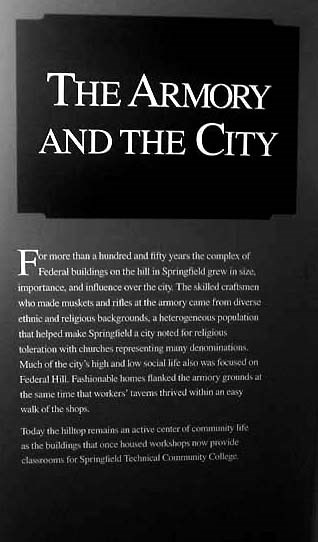
Springfield Armory NHS, US NPS THE ARMORY AND THE CITY For more than a hundred and fifty years the complex of Federal buildings on the hill in Springfield grew in size, importance, and influence over the city. The skilled craftsmen who made muskets and rifles at the armory came from diverse ethnic and religious backgrounds, a heterogeneous population that helped make Springfield a city noted for religious toleration with churches representing many denominations. Much of the city's high and low social life also was focused on Federal Hill. Fashionable homes flanked the armory grounds at the same time that workers' taverns thrived within an easy walk of the shops. Today the hilltop remains an active center of community life as the buildings that once housed workshops now provide classrooms for Springfield Technical Community College.
![Displayed are early images of the Continental Magazine [blt. 1782] and two early maps.](/spar/learn/historyculture/images/77F_a_8.jpg?maxwidth=650&autorotate=false)
Springfield Armory NHS, US NPS THE EARLY YEARS, 1782-1824 Situated on a major river yet beyond the reach of ocean going warships, and centrally located for the northern states the government established a magazine for the storage of powder during the Revolutionary War. These qualities and the proximity of tributaries capable of supplying plentiful water power led the Federal government to select Springfield as the site for its northen armory in 1794. An incident in these early years had an effect far beyond the manufacture or storage of military arms. It was to this site, belonging to the Continental Congress, that Daniel Shays and his band of farmers, protesting the State's tax and land policies, headed intending to seize arms to support their cause. Shays's Rebellion was an important factor in demonstrating the weakness of the Continental Congress and the need for a stronger central government. It was a demonstration that helped the States to adopt our Federal Constitution. 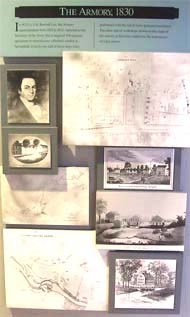
Springfield Armory NHS, US NPS THE ARMORY 1830 In 1825 Lt. Col. Roswell Lee, the Armory superintendent from 1815 to 1833, reported to the Secretary of the Army that it required 194 separate operations to manufacture a flintlock musket at Springfield. Exactly one half of these steps were performed with the aid of water-powered machinery. The three sets of workshops shown on the maps of the armory at that time emphasize the importance of water power. 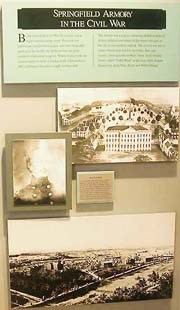
Springfield Armory NHS, US NPS SPRINGFIELD ARMORY IN THE CIVIL WAR By the time of the Civil War the armory was a major manufacturing center. Power driven machinery, standardized gauges, and interchangeable parts gave the facility the ability to turn out great numbers of identical weapons. Where once it took one man ten hours to make a musket stock, with machines 450 could be produced in a single ten hour shift. The armory was a magnet, attracting skilled workers of diverse religious and ethnic backgrounds who gave to the city a cosmopolitan outlook. The armory was also a center of both high and low social life. Bars and taverns, catering to the workers' thirst, lined Armory Street, called "Toddy Road" at the time; while elegant houses rose along State, Pearl, and Walnut Streets. 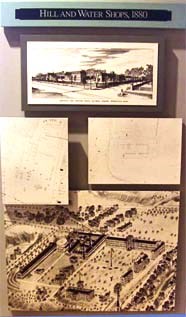
Springfield Armory NHS, US NPS 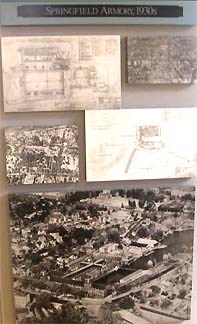
Springfield Armory NHS, US NPS SPRINGFIELD ARMORY, 1930s 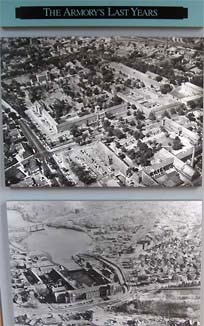
Springfield Armory NHS, US NPS 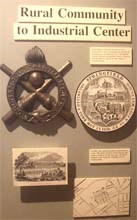
Springfield Armory NHS, US NPS 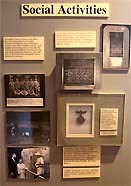
Springfield Armory NHS, US NPS 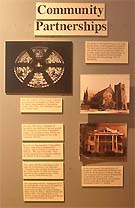
Springfield Armory NHS, US NPS |
Last updated: February 26, 2015
